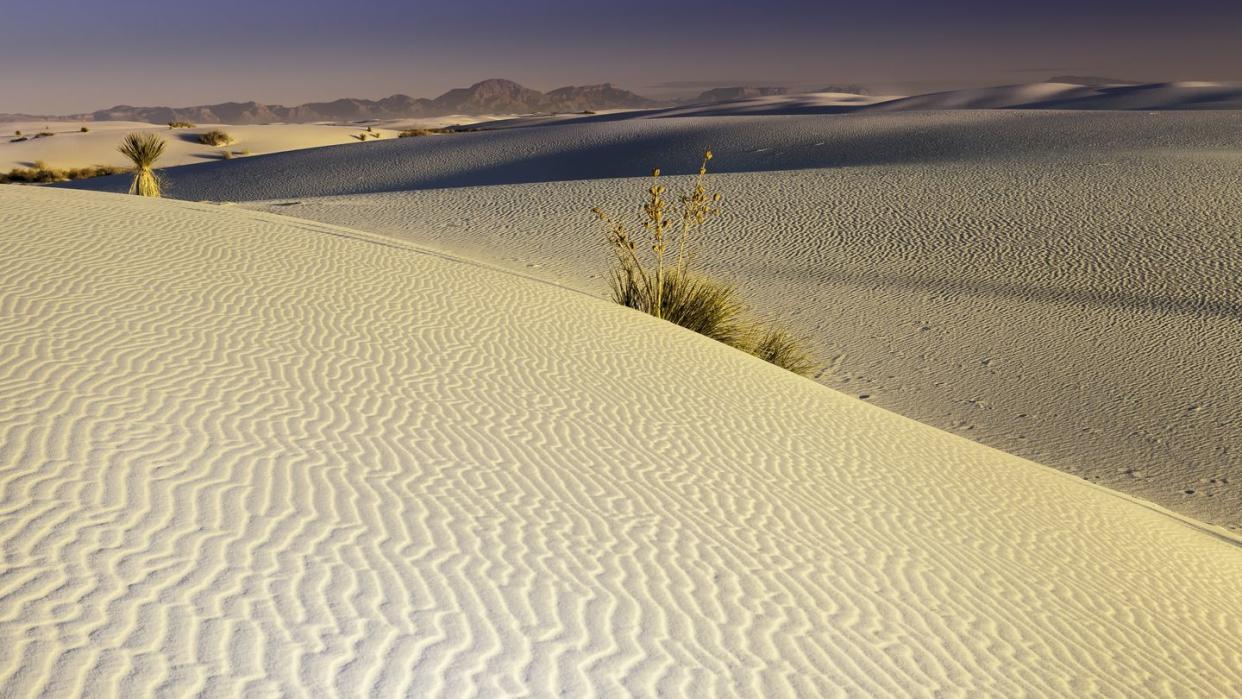A Desert Dig Has Revealed a Stunning Ancient Campsite on an Air Force Base

A team of geomorphologists discovered an 8,200-year-old campsite on Holloman Air Force Base in New Mexico.
Dated to the Paleo-Archaic time period, the team found about 70 artifacts indicating human activity at the site.
Located near White Sands National Park, the campsite predates the formation of the dunes, highlighting historic human movement in the area.
Over 8,000 years ago, some of the earliest humans in North America burned mesquite charcoal while camping in New Mexico. That’s what a new discovery on Holloman Air Force Base shows—providing key clues about the Paleo-Archaic people that lived in the area before the advent of farming.
Located on a road cut dubbed Gomolak Overlook, the 49th Civil Engineer Squadron worked with a group of geologists (160 miles southeast of Albuquerque, near White Sands National Park) to dig 6.5 feet below the surface and discover the ancient campsite.
“The formation of the white sand dunes inadvertently buried the site, with windblown silt protecting the delicate archaeological remains,” Matthew Cuba, 49th CES cultural resource manager, said in a statement. “This site marks a pivotal moment in shedding light on the area’s history and its early inhabitants.”
Paleo-Archaic people—descendants of the first humans in the Americas and the people group to first start growing domesticated plants on the continent—left about six dozen items at the location, all of which offer a look into early human adaptation to the region and the environmental changes that have happened since. Sites like these also showcase settlement patterns of the Paleo-Archaic people throughout their seasonal travels.
“Found on the site were approximately 70 items, ranging from flake stones to a rare example of an early ground stone, providing valuable clues about past human activities,” Cuba said. “We also uncovered a series of hearths, or community campsites, with remnants of mesquite charcoal which is a tremendous find in and of itself.” Mesquite trees had—and still have—a wealth of uses, and were plentiful in the area.
NASA believes the unique gypsum-based sands of the White Sands National Park began forming dunes roughly 6,500 to 7,000 years ago. That’s more recently than the campsite would have been in use. NASA states the dunes move as much as 30 feet per year and cover 275 square miles.
So, the Paleo-Archaic period predates the dune-forming in New Mexico—the National Park Service states that this time period begins with the end of the Paleoindian period and includes the adoption of agriculture. The Archaic period in the American Southwest features subregional spatial divisions that show broad territories throughout which people groups inhabited and coexisted. Finding Early Archaic sites in the Southwest is rare, but not unheard of, NPS stated.
Holloman Air Force Base has proven a rich historical location, with 400 archaeological discoveries unearthed on the property. “The Department of Defense’s stewardship of vast tracts of land, including areas between White Sands National Park and Holloman, inadvertently protects numerous documented and undocumented archaeological resources,” Scott Dorton, 49th CES environmental chief, said in a statement. “As a result, some of the best-preserved archaeological records in the Tularosa Basin reside on DoD land.”
Some of the oldest archaeological finds in North America come from this Tularosa Basin, including fossilized footprints dating back roughly 11,000 years that show humans tracking a sloth and 10,000-year-old footprints of a woman and small child.
Cuba said that with each additional find in the area, the research teams have a responsibility to ensure their preservation and protection.
You Might Also Like

